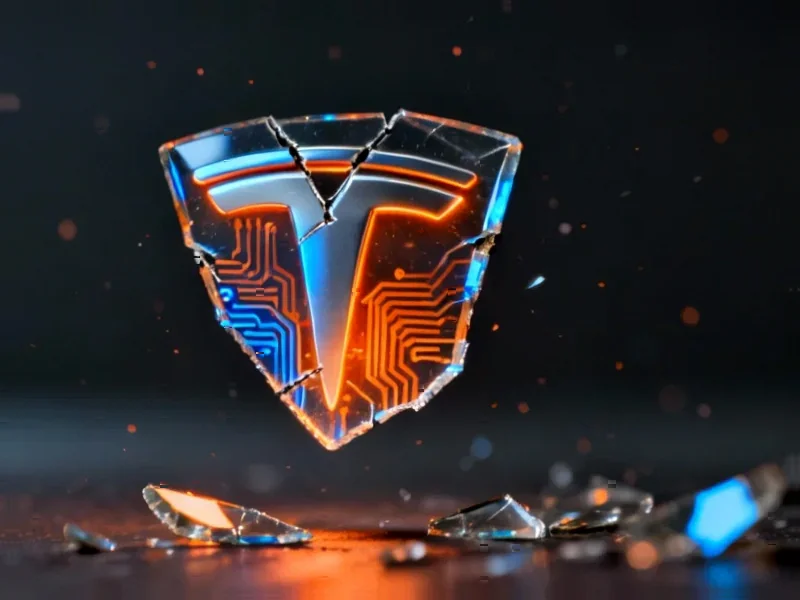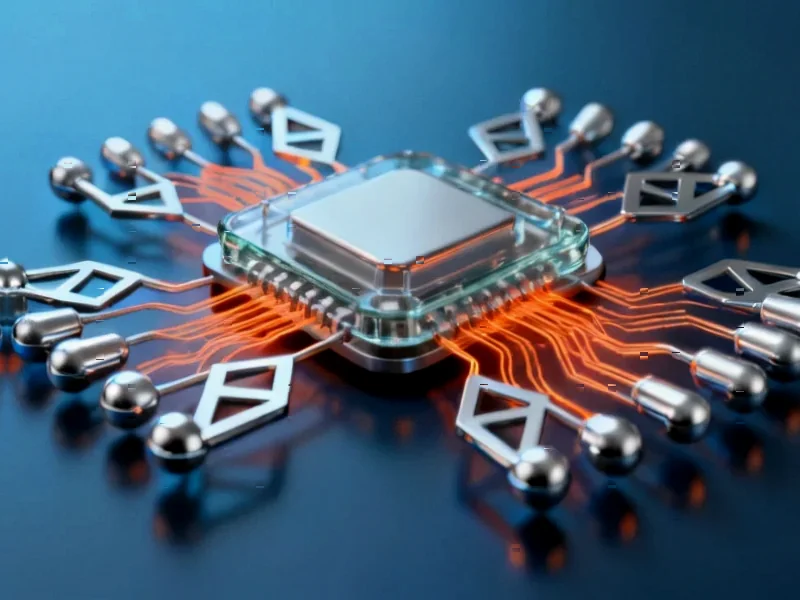Elon Musk’s latest power play reveals just how dramatically Tesla’s ambitions have shifted from electric vehicles to artificial intelligence and robotics dominance. In a stunning earnings call performance, Musk framed his quest for a $1 trillion compensation package around one central concern: “If we build this robot army, do I have a strong influence over that robot army?” The comment, made during Tesla’s third-quarter earnings call, represents perhaps the most transparent admission yet that Tesla sees its future not in transportation alone, but in becoming an AI and robotics powerhouse.
Table of Contents
The Compensation Battlefield
What’s particularly striking about Musk’s robot army argument is its timing. According to reports from the earnings call, shareholders will vote November 6 on whether to grant Musk up to 12% of Tesla’s stock—a package that could be worth approximately $1 trillion if the company hits an $8.6 trillion market valuation. That’s not just ambitious; it’s unprecedented in corporate history. The board has been lobbying shareholders for weeks, even as proxy advisers Institutional Shareholder Services and Glass Lewis recommended rejection. Musk’s response? He called the firms “corporate terrorists” and made his final pitch centered on control rather than compensation.
This isn’t just about money—it’s about vision alignment. Musk essentially argued that without ironclad control, he can’t comfortably steer Tesla toward its most ambitious projects, particularly the Optimus humanoid robot program. The implication is clear: Musk sees Optimus not as a side project but as central to Tesla’s future valuation. Interestingly, this comes as Tesla delivered record vehicles in Q3 2025 but saw profits drop 37% year-over-year to $1.4 billion, suggesting the company needs new growth narratives beyond automotive.
Industry Reality Check
While Musk paints visions of robot armies, the rest of the automotive industry is grappling with much more immediate challenges. General Motors’ decision to axe its BrightDrop electric van program after just four years speaks volumes about the current EV commercial market. According to sources familiar with the situation, hundreds of unsold BrightDrop vans have been sitting untouched in lots in Michigan and Canada for months, with one tipster specifically noting “hundreds of them are in a lot in Flint, Michigan.”
What went wrong? The vehicles were reportedly well-liked and the electric drivetrain technology solid for last-mile delivery applications. But GM appears to have missed a critical piece: infrastructure. Rather than offering depot charging as part of fleet purchases, the company leaned heavily on outside partnerships, creating headaches for potential customers. This infrastructure gap represents a fundamental challenge that many automakers are still struggling to solve as they transition to electric commercial vehicles.
The AI-Energy Convergence
Meanwhile, a fascinating convergence is happening between the EV and AI sectors that underscores where the real money might be flowing. Redwood Materials just raised $350 million in a Series E round that included strategic investment from Nvidia’s venture arm, NVentures. The company’s valuation reportedly jumped to about $6 billion, a billion dollars higher than its previous round. What’s particularly interesting is how Redwood is connecting these worlds: the company is giving new purpose to EV batteries that have too much life left for recycling by using them to power AI data centers.
This represents a sophisticated understanding of the energy demands of our AI-driven future. As data centers consume ever more power, finding sustainable energy storage solutions becomes critical. Redwood’s approach—tying retired EV batteries to renewable energy sources to power AI infrastructure—shows how the mobility and computing revolutions are becoming deeply intertwined. It’s a vision that makes Musk’s robot army argument seem less far-fetched and more like strategic positioning for the next technological frontier.
Market Shifts and Strategic Pivots
The broader automotive landscape reveals an industry in transition. Ford is pausing production of its F-150 Lightning trucks to prioritize gas and hybrid versions following a fire at its aluminum supplier. GM CEO Mary Barra revealed the company will drop support for Apple CarPlay and Android Auto from all vehicles—a bold bet on proprietary software. And Rivian is undergoing another round of layoffs (its third this year) while its founder takes on the chief marketing officer role.
What’s emerging is a clear divide between companies betting on integrated technology stacks (Tesla, GM) versus those focusing on core manufacturing excellence. The tariffs situation adds another layer of complexity—both GM and Ford project billions in tariff-related profit reductions for 2025, though both have improved their forecasts from earlier this year. The expiration of federal EV tax credits appears to have driven a Q3 sales surge for Tesla, but the sustainability of that demand remains uncertain.
The Robot Army Calculus
Musk’s robot army argument, while dramatic, reflects a fundamental truth about Tesla’s valuation story. The company has always traded on future potential rather than current automotive performance. With Optimus, Tesla is attempting to create what could be the world’s first viable humanoid robot platform at scale. The potential applications span manufacturing, logistics, healthcare, and beyond—far beyond the automotive market that currently defines Tesla’s revenue.
Still, Musk’s framing raises legitimate governance questions. Should any CEO have that level of control over technology that could fundamentally reshape labor markets and society? The argument seems designed to appeal to investors who believe Musk’s vision is inseparable from Tesla’s success. But it also represents a significant concentration of power that traditional governance experts would rightly question.
As the November 6 shareholder vote approaches, the decision will reveal much about how investors view Tesla’s future: as primarily an automaker navigating a challenging transition, or as an AI and robotics company that happens to make cars. Given that readers in TechCrunch’s recent poll saw longer-haul delivery as the most promising autonomous vehicle business model (40% versus 25.5% for robotaxis), the industry consensus seems more grounded in near-term applications than Musk’s robotic ambitions.
The Road Ahead
The coming quarters will test whether Musk’s vision aligns with market reality. Tesla faces increasing competition in both EVs and autonomy, while its energy and robotics businesses remain in earlier stages of development. The success or failure of the compensation package vote could significantly influence Tesla’s strategic direction and Musk’s level of engagement with the company.
Meanwhile, the rest of the industry continues to grapple with the practical challenges of electrification, from charging infrastructure to supply chain constraints. The contrast between Musk’s grand ambitions and GM’s BrightDrop failure illustrates the gap between vision and execution in today’s rapidly evolving mobility landscape. As one industry insider noted about the BrightDrop situation, sometimes the biggest obstacles aren’t the technology itself, but the ecosystem required to support it.
What’s clear is that the lines between transportation, energy, and computing are blurring faster than many anticipated. Companies that can navigate this convergence—whether through robot armies, energy storage innovations, or smarter infrastructure strategies—will likely define the next era of technological leadership. Musk’s $1 trillion gambit represents one of the boldest bets yet on where that future is headed.



